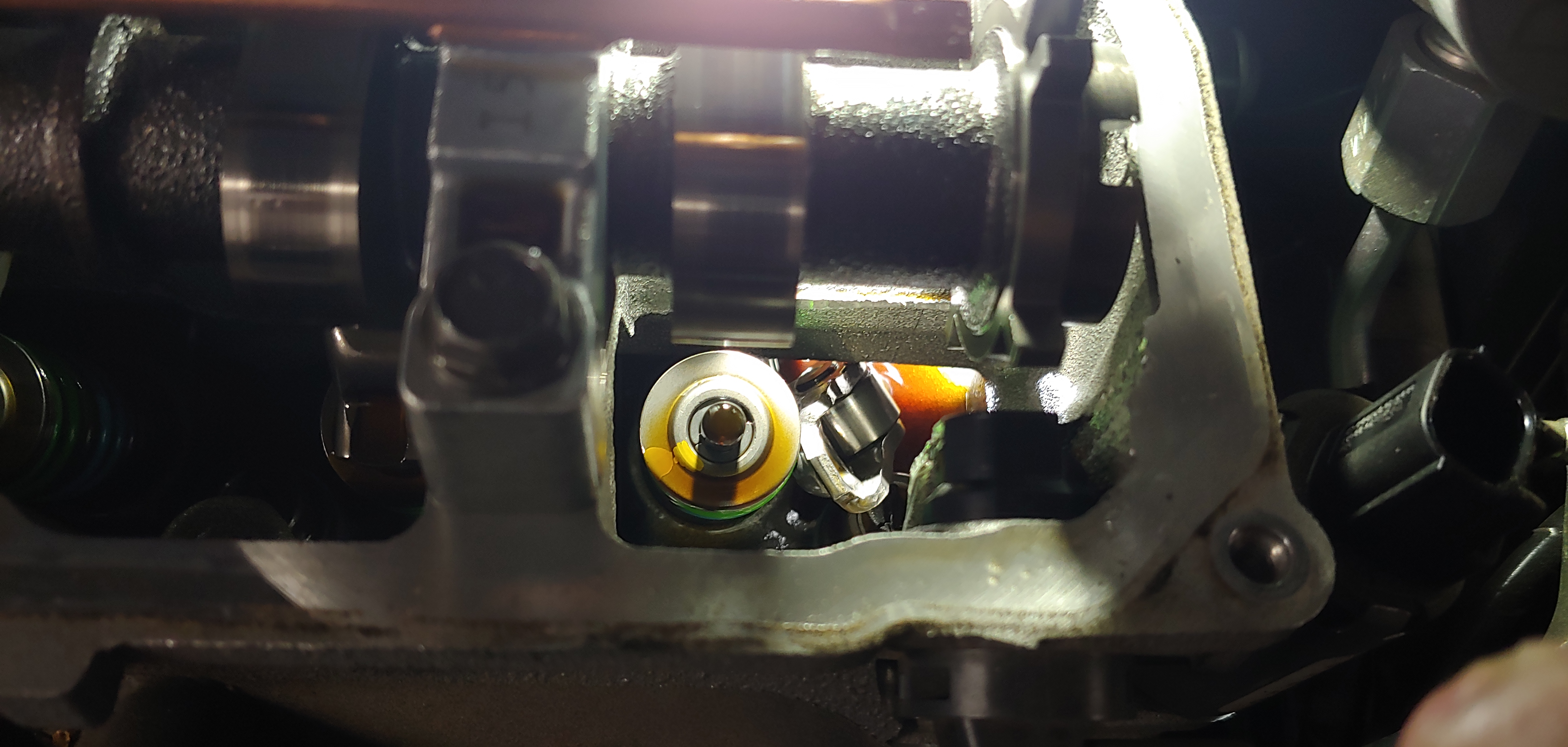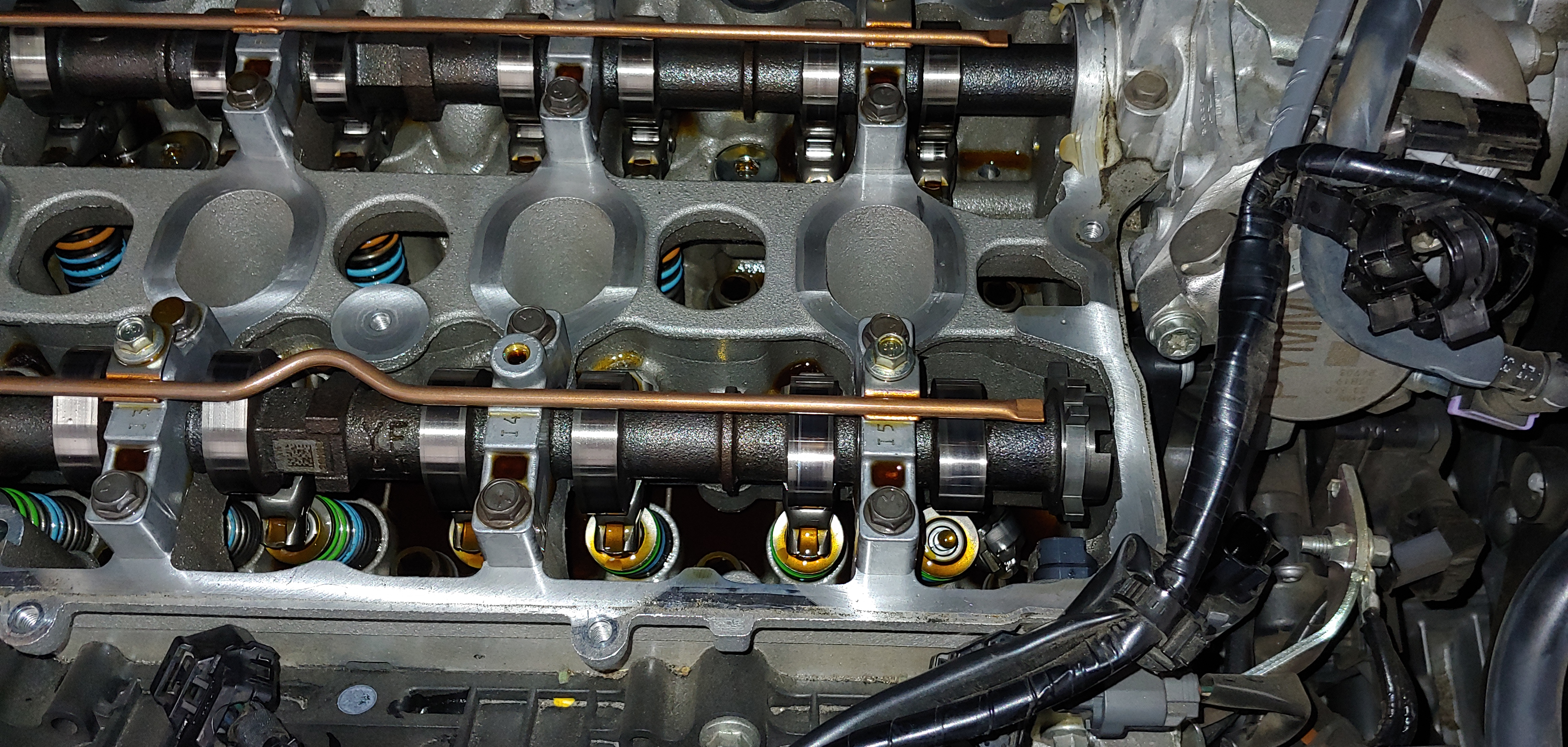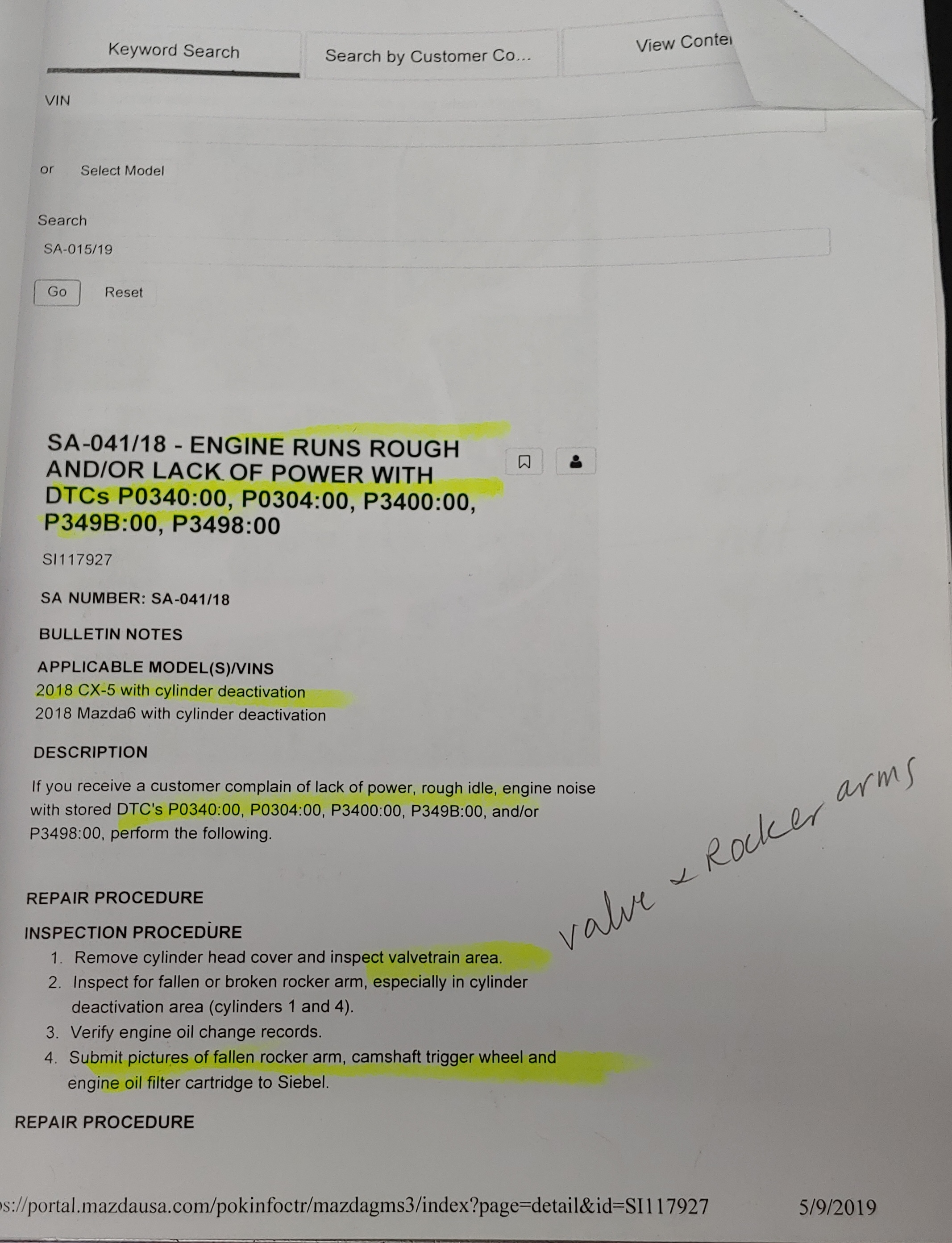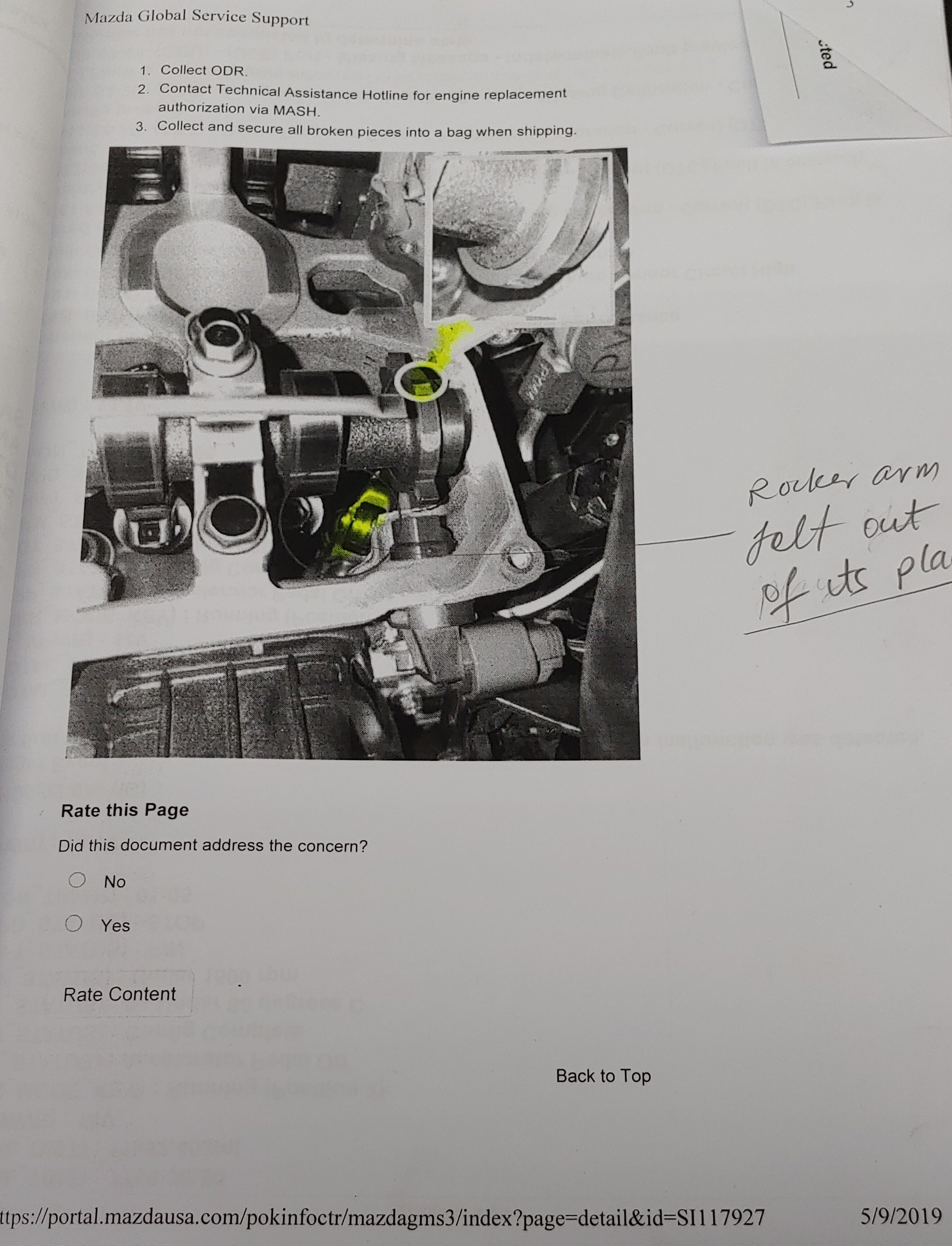For those who were asking, I was able to take a few pictures of what the rocker arm looks like when its fallen off. I stopped by the dealership to grab a few things from my car and talked with the technician for a bit. He was a lot more helpful than the service rep and showed me all the paper work he got and said the copy of the work showing that I had a P0304 previously never got to him. WTH! For those that are going ask how he didn't have the record, Hindsight is 20/20 I should've taken my car back to the same dealership that did the P0304 code work for me. The first dealership I took it too was the one I purchased the car from and I was having an oil change done that day as part of the year free service and 80 miles from my work/home. The second trip I ended up taking it to the dealership 10 miles from my place to avoid having to take off more time off from work than necessary.
Anyways, while I was there I asked to grab a few pics and was able to get the ones below.
I'm also grabbed a shot of the service bulletin with the instructions to check for the rocker arm from Mazda. The SA-015/19 posted earlier in this thread is for checking debris but SA-041/18 is the specifically for the rocker arm. Inspection step 3 is important for anyone owning a Mazda that may be affected. Make sure your oil change service records are verifiable, especially if you're doing your own oil changes. I wouldn't put it past a dealership to hassle you over something like that. They didn't for me but you never know.




Anyways, while I was there I asked to grab a few pics and was able to get the ones below.
I'm also grabbed a shot of the service bulletin with the instructions to check for the rocker arm from Mazda. The SA-015/19 posted earlier in this thread is for checking debris but SA-041/18 is the specifically for the rocker arm. Inspection step 3 is important for anyone owning a Mazda that may be affected. Make sure your oil change service records are verifiable, especially if you're doing your own oil changes. I wouldn't put it past a dealership to hassle you over something like that. They didn't for me but you never know.




Last edited:
